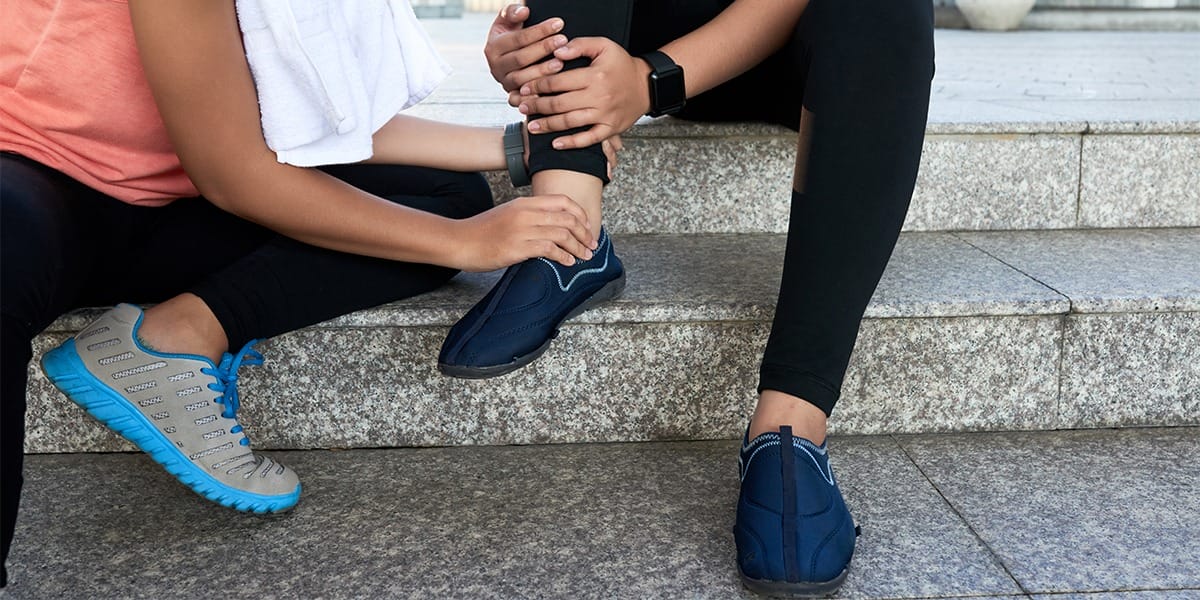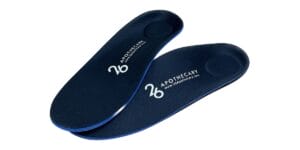CrossFit continues growing in popularity due to its intense, community-based approach to fitness. However, the demanding combination of Olympic lifts, plyometrics, and gymnastics places substantial stress on the feet and ankles. Even dedicated athletes find themselves sidelined by nagging pains or sudden injuries.

Understanding common CrossFit foot and ankle injuries enables prevention and rapid treatment when problems occur. This helps athletes maintain training capacity rather than losing progress during downtime.
Most Common CrossFit Foot & Ankle Injuries
- Achilles Tendonitis – Repeated calf exercises and jumps strain the Achilles tendon, where it inserts into the heel, causing inflammation and pain.

- Peroneal Tendonitis – Quick starts/stops and lateral moves overwork the peroneal tendons along the outer ankle, leading to swelling and instability.

- Stress Fractures – High-impact moves like box jumps generate recurrent pressure that can fracture vulnerable metatarsal bones or other foot structures.

- Acute Fractures – Attempting to lift too much weight with improper form causes immediate bone breaks, usually in the midfoot or forefoot.
- Plantar Fasciitis – The plantar fascia ligament along the arch becomes overloaded and inflamed, causing stabbing heel pain with the first steps after rest.

- Knee/Back Pain – Foot issues like flat arches or instability disrupt alignment farther up the kinetic chain, manifesting as pains in the knee, hip, or back.

What To Do About CrossFit Foot/Ankle Injuries
Ignoring pains that crop up during workout days risks more severe overuse damage or sudden acute injuries. Getting properly diagnosed ensures the right treatment plan for a swift comeback.
While treatments vary from patient to patient based on the severity of the injury and the athlete’s goals, common treatment plans incorporate the following:
- Immobilization – Resting injured structures helps acute inflammation and damage heal. Temporary use of a protective boot or cast prevents re-injury.

- Orthotics – Custom insoles provide stability, improve alignment, and offload injured areas like the plantar fascia or metatarsals.

- Rehab Exercises – Specific stretches and strengthening moves rebuild flexibility, endurance and balance in affected tendons, muscles and ligaments.

- Footwear Modifications – A shoe with proper heel lift, support features, and shock absorption suits the athlete’s foot type and CrossFit routine.

- Adjunct Therapies – Massage, ice, compression, or modalities like laser therapy, ultrasound or iontophoresis accelerate the body’s natural healing capacity.

- Platelet-Rich Plasma – Injecting concentrated platelet cells speeds recovery of chronic injuries by delivering a concentrated mix of growth factors.

- Surgery – Rarely necessary, but may be part of the treatment plan to realign displaced fractures, reconstruct torn ligaments, or debride damaged tendon tissue after more conservative options have been exhausted.

A podiatrist understands the unique stresses of CrossFit training on the feet and ankles. Receiving an accurate diagnosis and treatment plan prevents losing progress from unnecessary downtime and long-term complications. With rapid, appropriate care, most athletes completely recover and return to PR attempts.



